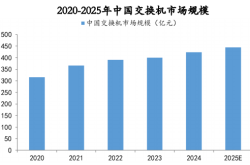2025: China's AI Teams Launch a Major Counterattack!
![]() 06/06 2025
06/06 2025
![]() 464
464
Deutsche Bank predicts that "2025 will be the year when the investment community recognizes China's leadership in the global AI competition." From the rapid closing of the gap between domestic large models and top US models, to China's fighter jets gaining an absolute edge in the India-Pakistan conflict, and recent successes in the AI chip sector, these milestones substantiate Deutsche Bank's forecast.
However, China's advancements in large models and chips have drawn further suppression from overseas. According to the UK's Financial Times, the US government has effectively barred some American companies from selling semiconductor design software to China, directly impacting Huawei HiSilicon's ability to design advanced chips below 5nm.
Chinese scholars believe that while the Sino-US tariff war has temporarily subsided, the "second-phase competition" between the two countries in AI is already intense. If the AI competition is the "arms race" of the new era between China and the US, then the significance of large models in this race is akin to that of nuclear bombs during the US-Soviet rivalry.
I. Autonomous Controllability: A Vital Component for China's Large Models
The emergence of DeepSeek has significantly narrowed the two to three-year technological gap widely believed to exist between China and the US. From a cost-efficiency perspective, it has even achieved a lead. On May 29, DeepSeek open-sourced its latest R1 0528 version. According to the renowned code testing platform Live CodeBench, its performance is on par with OpenAI's latest high-version o3 model.
Internationally, DeepSeek has thwarted the US's attempt to stifle the development of China's AI large models through sheer computing power. Domestically, it has had a profound impact on the "six little tigers" of large models, with some enterprises being swiftly marginalized. Some have halted investments and spending, some rely on financing to survive, some have pivoted to 2B business, and some have even seen their teams disband.
After more than two years of development, the competitive landscape of China's AI large models has become increasingly clear. Currently, those still actively participating include not only emerging forces like DeepSeek but also internet giants such as Tencent, ByteDance, Alibaba, and iFLYTEK, regarded as the "national team" of AI by the outside world. They are contributing their strengths to China's reversal in this competition.
Among the giants, Tencent has consistently driven the company's development with a "product strategy." Leveraging its vast user base and rich ecosystem accumulated through apps like WeChat and QQ, it has built a comprehensive AI product matrix based on a multi-model strategy of "core technology independent research and development + embracing advanced open source."
ByteDance's refusal to accept DeepSeek demonstrates its confidence in self-developed large models. Relying on the domestic and international video data accumulated through Douyin and TikTok, ByteDance has released the Doubao deep thinking large model, which excels in visual reasoning and understanding capabilities. Its image and video generation tool, Jiemeng AI, recently topped the free app download chart in Apple's China App Store.
Thanks to the accumulation of national and even global applications like WeChat and Douyin, China's large models possess the strength and confidence to compete with the US in terms of data breadth and depth.
As China's most powerful cloud computing vendor, Alibaba has focused on AI infrastructure. Currently, Alibaba's Tongyi has open-sourced over 200 models, with a cumulative global download volume exceeding 300 million, surpassing the US's Llama to become the world's top open-source model.
However, this development landscape still lacks the most crucial component—a fully autonomous and controllable technology system. None of the large model products under the aforementioned giants are trained using domestic chips. This is also the reason for the surge in their card hoarding expenditures over the past two years.
Unlike the paths chosen by internet giants, iFLYTEK has embarked on a unique path of independent development based on a long-term strategy of autonomous controllability. Over the past two years, it has not only collaborated with Huawei to build China's first domestic computing power platform with a scale of 10,000 cards, "Feixing No.1," but also trained large models that reach the international advanced level on this platform.
According to the "AI Index Report 2025" released by Stanford University in April, in the technical performance evaluation of many top large models, iFLYTEK Spark 4.0 became the only Chinese large model to rank among the top ten in China due to its outstanding performance in the "MixEval-Hard" test, demonstrating its exceptional technical prowess and international competitiveness.
The newly upgraded Spark X1 deep reasoning large model, launched on April 20, with a compact architecture of one order of magnitude smaller parameters, is on par with OpenAI's o1 and DeepSeek's R1 in overall performance on core indicators such as mathematical reasoning and code generation. This further verifies that the full-stack autonomous and controllable large model trained on domestic computing power possesses the strength to reach the highest level in the industry.
II. Computing Power Breakthrough: Chinese Enterprises Jointly Bridging the Sino-US Gap
A conclusion in the "AI Index Report 2025" is particularly striking: "The US still maintains a lead in the output of top AI models, but China is rapidly narrowing the performance gap at an astonishing speed."
The report data shows that at the end of 2023, the performance gaps between Chinese and American models in key benchmarks such as MMLU, MMMU, MATH, and HumanEval were 17.5%, 13.5%, 24.3%, and 31.6%, respectively. However, just one year later, by the end of 2024, these gaps had been significantly narrowed to 0.3%, 8.1%, 1.6%, and 3.7%.
Previously, the industry generally believed that the gap between China and the US in large models was still two to three years. But this seemingly insurmountable gap has been rapidly bridged in just half a year. The disruptive innovations of DeepSeek and Alibaba, the aggressive moves by Tencent and ByteDance leveraging their strong traffic and ecosystem, and iFLYTEK's forward-looking strategy of autonomous controllability have all played crucial roles.
Meanwhile, through the joint efforts of Chinese enterprises such as Huawei and iFLYTEK over several years, the gap between domestic computing power and the US has also been significantly narrowed. In the realm of AI computing power, representing today's advanced level, China has achieved a rare domestic substitution. This is a milestone in breaking external blockades and ensuring the safety of the industrial chain.
On March 20, the joint team of iFLYTEK and Huawei Ascend took the lead in breaking through the large-scale cross-node expert parallel cluster reasoning of the MoE model on domestic computing power clusters and launched the industry's first MoE model training and reasoning solution based on domestic computing power. On April 18, through various optimization methods, the two parties further elevated the performance upper limit of MoE model cluster reasoning on the "Feixing No.1" platform, doubling the performance of large-scale expert parallel cluster reasoning.
Building on this, on May 29, Huawei launched a brand-new model, Pangu Ultra MoE, with a parameter scale of up to 718 billion, and stated that Ascend has comprehensively surpassed the reasoning deployment performance of the MoE model based on NVIDIA's Hopper architecture. Earlier, DeepSeek's deployment solution leveraging domestic chips had also surpassed the performance of NVIDIA's H100 series chips.
NVIDIA CEO Jensen Huang has recently mentioned multiple times that the competition in China's AI is exceptionally fierce, with numerous startups and about 50 related GPU computing power companies rapidly rising. Among them, Huawei's Ascend system based on the CloudMatrix 384 super-node even surpasses NVIDIA's products in some performance aspects. Huang noted: "This is an opponent that we must attach great importance to and fully respect." Under his constant promotion, the US side swiftly made policy adjustments to block American companies from selling semiconductor design software to China. This also reflects that in the increasingly intense Sino-US AI competition, the strength demonstrated by Chinese enterprises commands both respect and caution from competitors.
III. Industrial Implementation: The Most Comprehensive Manufacturing System Nurtures the Strongest Application Ecosystem
The industry recognizes that large models can only truly realize their disruptive technological value when implemented in industries and enhance productivity. Compared to the US, China's attitude towards this matter is obviously more open. Entering 2025, almost all regions in China are promoting "AI+", with a continuous stream of large model-related products and applications.
China boasts the world's largest, most reasonably laid out, and most comprehensive manufacturing system. This provides vast potential for the large-scale implementation and application innovation of large models across various industries.
Among internet giants, attracted by the Qwen model family and open-source ecosystem, many leading companies in fields such as banking, mobile phones, and automobiles have joined Alibaba's AI ecosystem. Even Apple has chosen Alibaba as an important partner in China's AI layout. Over the past two years, Alibaba Cloud has comprehensively rebuilt its full-stack technical architecture from underlying hardware to model training and reasoning, forming a mutually supportive cycle with a rich commercial ecosystem.
Tencent, with its rich C-end product matrix, has honed and created "usable AI" in areas such as game experience optimization, precise advertising placement, and WeChat ecosystem advertising and e-commerce collaboration.
The core challenge of implementing large models in vertical industries is "delivery," which requires manufacturers to possess comprehensive capabilities to address customers' multifaceted needs. In this regard, iFLYTEK has unique advantages.
Based on its long-term deep cultivation in professional fields such as healthcare, education, and government affairs, iFLYTEK has constructed a comprehensive suite of AI solutions from top-level planning to implementation, covering aspects such as "building computing power, managing data, training models, implementing scenarios, ensuring security, and refining operations." As a result, it has gained widespread recognition among central and state-owned enterprises and government clients. According to the IDC report, the market size of China's large model solutions reached 3.18 billion yuan in 2024, with iFLYTEK ranking first in market share.
In just the past month alone, Liu Qingfeng, Chairman of iFLYTEK, has appeared five times in important meetings with local government officials. From Henan, Liaoning, Guangxi, to Sichuan and Chongqing, iFLYTEK's cooperation with local governments in the field of AI, including large models, has far exceeded the traditional meaning of "investment attraction" or "technology docking" and is more akin to a pilot and demonstration of a new type of "institutionalized cooperation." In this process, iFLYTEK has obviously become the most trusted AI cooperation partner for local governments in promoting the "AI+" plan.
Conclusion
Currently, the development of China's AI, represented by large models, is at a pivotal turning point. From technological breakthroughs to industrial implementation, from catching up to running side by side, and even taking the lead in some fields, in this crucial competition concerning national fortune, Chinese enterprises are "crossing the sea, each displaying their own prowess," overcoming numerous challenges, and jointly reversing the passive situation.
In this process, enterprises that choose the more challenging path of independent innovation not only earn respect for themselves but also seize opportunities for the country. We have reason to believe that as more and more Chinese enterprises embark on this path and autonomous controllability becomes an industry consensus, the comprehensive rise of Chinese technology is just around the corner.








